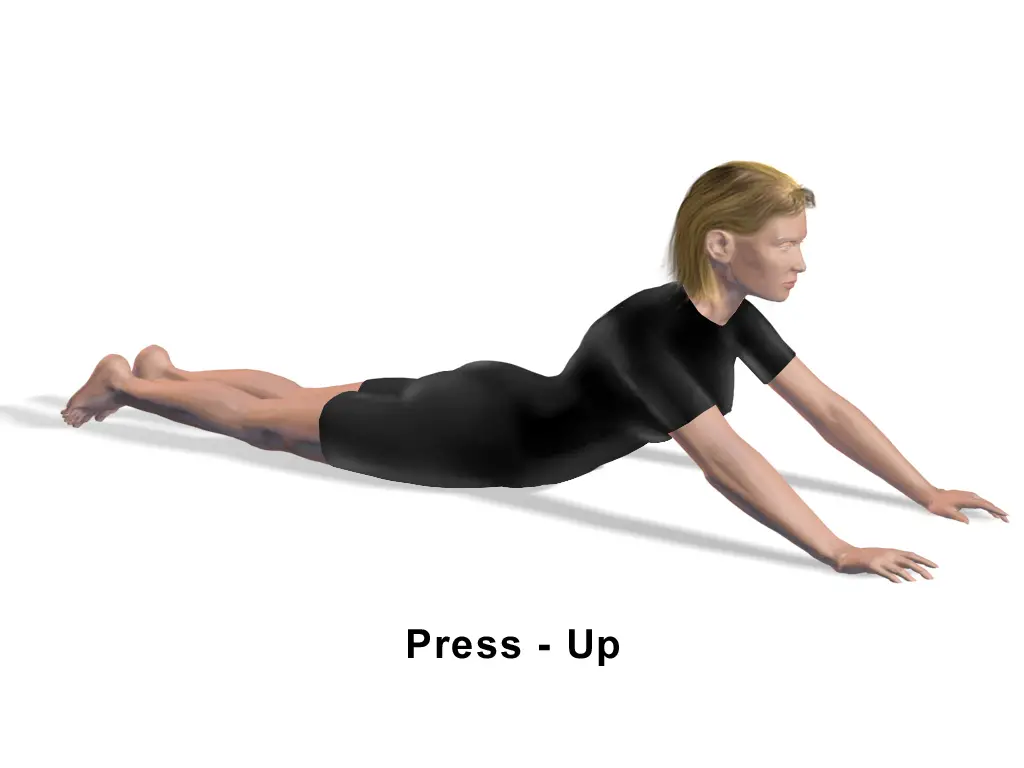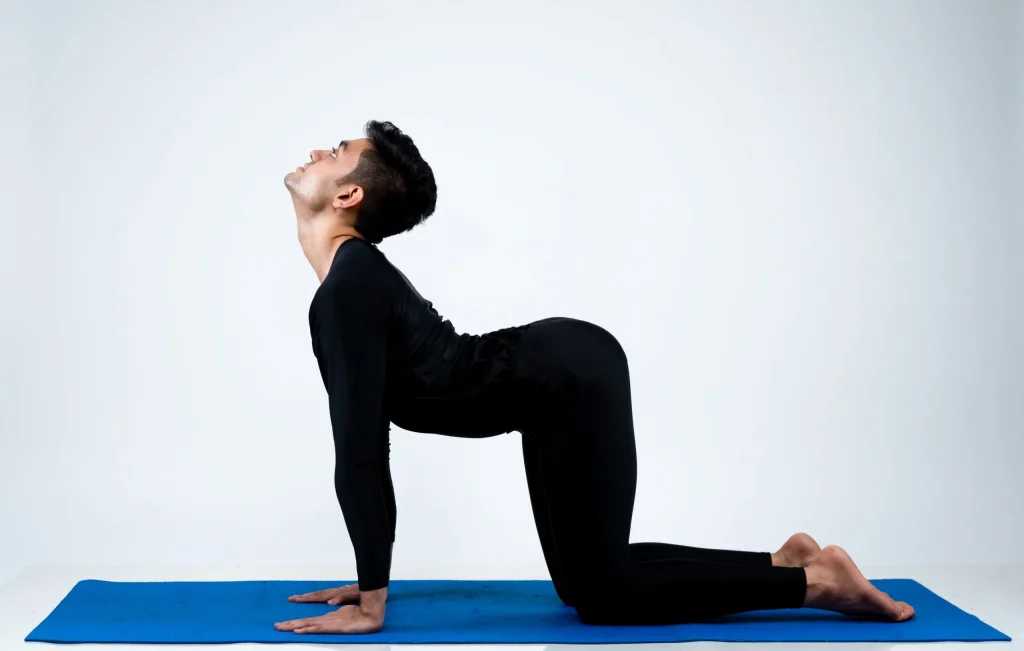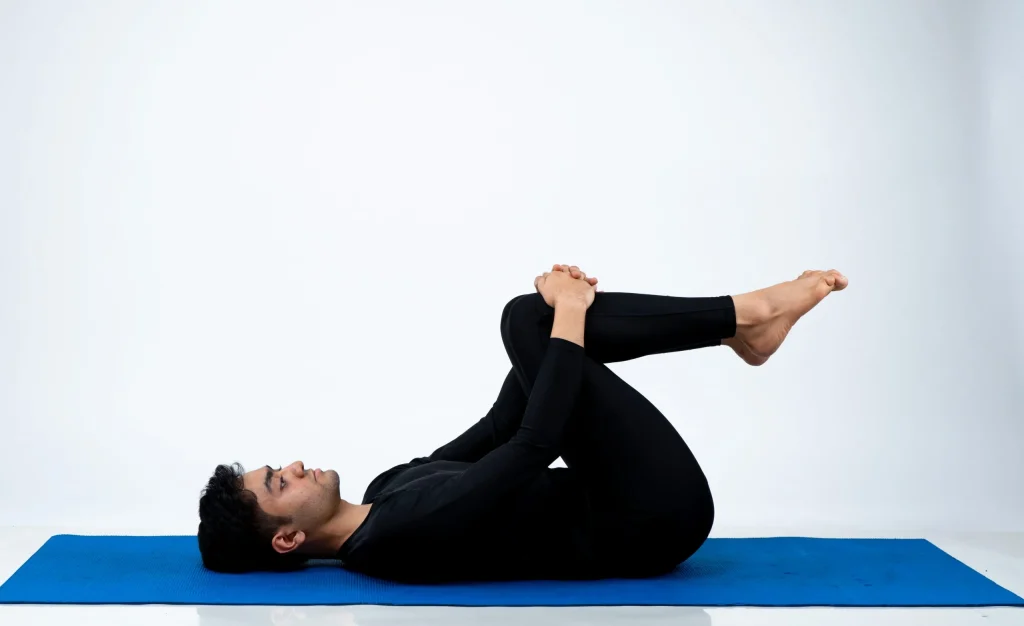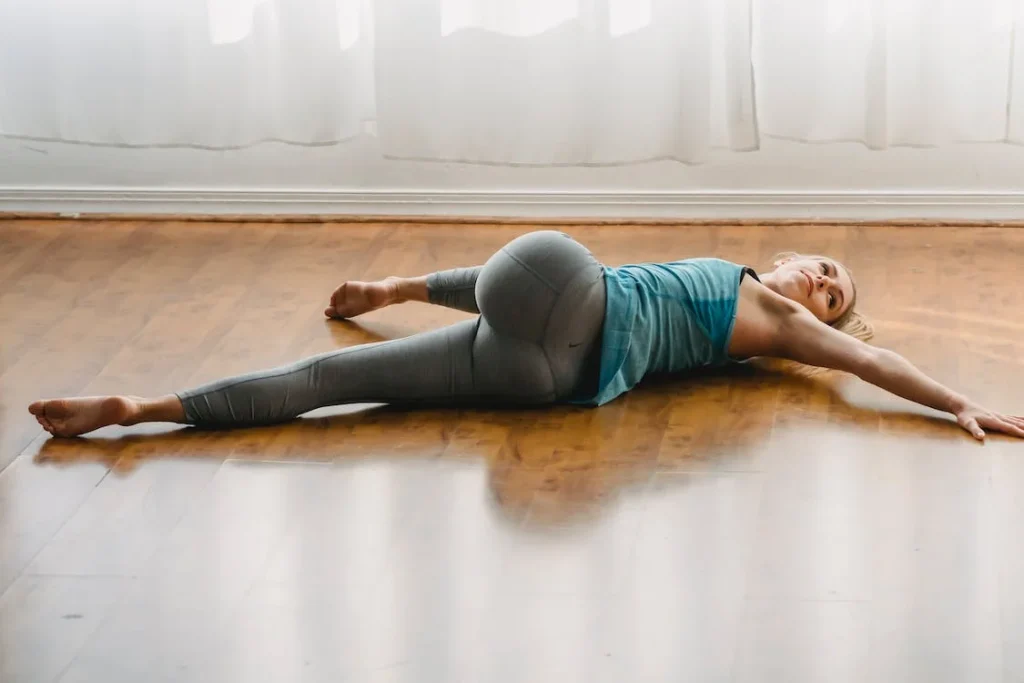If you’re one of the millions of people who suffer from sciatica, you know how debilitating and frustrating it can be. But there’s hope! There are certain exercises you can do in bed that can help ease your pain and get you on the road to recovery.
Contents
Press Up Exercise
The press-up exercise is one of the most effective sciatica exercises in bed. It can help to relieve pain by stretching the muscles and ligaments in the back and also strengthening the muscles in the back and buttocks.

To do this exercise, lie on your back with your knees bent and your feet flat on the ground. Place your hands on either side of you, palm down. Slowly press your hips and tailbone off the ground, arching your back as you do so. Only go as far as is comfortable. Hold for a count of five and then slowly lower yourself back down to the starting position. Repeat 10 times.
Press up Extension Exercise
Sciatica is a general term for pain that radiates along the sciatic nerve. This nerve starts in your lower back and runs through your hip and down your leg. Sciatica can be caused by a number of things, including a herniated disc, spinal stenosis, or an injury.
If you have sciatica, you may find relief by doing exercises in bed. This is because lying down can help take pressure off your spine and ease the pain. Here’s a look at some exercises you can do in bed to stretch and strengthen your back and relieve sciatica pain:
Press-up Extension Exercise: This exercise is good for strengthening your upper back and stretching your chest. It can also help relieve upper back pain.
To do this exercise:
- Lie on your stomach with your legs straight. Place your palms flat on the bed next to your shoulders.
- Push up so that your arms are straight and you’re balanced on your toes. Keep your head in line with your spine. Hold for 5 seconds, then lower back down.
- Repeat 10 times.
Cat-Cow Stretch
This exercise is good for stretching your back muscles and relieving lower back pain. It can also help improve flexibility in your spine. Start on all fours with your knees under your hips and hands under your shoulders, spine neutral. As you exhale, round your upper back toward the ceiling, tucking your chin toward your chest (cat). As you inhale, arch your upper spine toward the ceiling while dropping your pelvis toward the floor (cow). Do 10 reps each way.

Knees to Chest Exercise
This is a great exercise for sciatica pain relief. Start by lying on your back with both knees bent. Using both hands, hug your knees to your chest. Hold for 30 seconds and then release. Repeat this 3-5 times for a total of 3 sets.

Posterior Pelvic Tilt Exercise
The posterior pelvic tilt exercise is great for those suffering from sciatica pain. To start, lie face up on your bed with your knees bent and feet flat on the surface. Slowly tilt your pelvis back, pressing your lower back into the bed. Hold this position for 5 seconds before returning to the starting position. Repeat this 10 times for 1 set.
Knee to Opposite Shoulder Exercise
To do this exercise, lie on your back with both legs extended. Bend your right leg and bring your right knee towards your left shoulder. Use your left hand to grab hold of your right leg just below the knee and pull it towards you. You should feel a stretch along the length of your right leg from your hip all the way down to your calf. Hold this position for 30 seconds and then repeat on the other side. Do 2-3 repetitions on each side.

This is a great exercise for stretching out the muscles in your legs and lower back. It can also help to relieve pain by breaking up any scar tissue that has formed around the sciatic nerve.
Figure 4 Stretch Exercise
Lie on your back in bed with both knees bent. Keeping your left knee in place, bring your right ankle up and over your left knee. Your right thigh should now be across your chest. Use both hands to grab hold of your right knee and pull it toward your chest until you feel a stretch along the back of your leg. Hold this position for 30 seconds, then release and repeat on the other side.
Frequently Asked Questions
What is the most effective exercise for sciatica?
The most effective exercise for sciatica may vary depending on the individual, but some exercises that may help include the following:
- Stretching the hamstrings and lower back
- Doing gentle exercises to strengthen the core and back muscles
- Doing exercises to improve flexibility in the hips and pelvis
- Using an ice pack or heat therapy on the lower back
- Taking over-the-counter pain medication as needed
Is lying in bed good for sciatica?
There is no one answer to this question as each person experiences sciatica differently and therefore some people may find lying in bed good for sciatica while others may not. Some people may find that lying down relieves pressure on the sciatic nerve while others may find that it aggravates their pain. Ultimately, it is important to experiment with different positions to see what works best for you.
What should you not do with sciatica?
There is no definitive answer to this question as the best course of action may vary depending on the underlying cause of the sciatica. However, some things that may worsen sciatica or should be avoided include sitting for long periods of time, standing for long periods of time, and lifting heavy objects. Additionally, people with sciatica may want to avoid activities that require them to twist or bend their spine.
sciatica pain, many people, sciatic nerve, tennis ball, nerve health, spinal cord, Alaska chiropractors, chiropractic care centers, high-quality patient care, chiropractic training, dr. wells, brent wells, massage therapy, soft pillow, enough neck, supportive neck pillow, spinal alignment, sciatic nerve pain, affected side, medium firm, unsupportive pillow, pajama pocket, physical therapy, wrong side sciatica, sleeping position, helpful position, comfortable sleep, elevated knees, bath water, high temperature, chiropractic, herniated disk, sleep hygiene, lumbar radiculopathy, rehabilitation, spinal adjustments, pain management, physical therapy, asleep, elbows, chiropractors, flexion, biceps, health, caregivers, the longest nerve in the body, radiculopathy
Conclusion
At this point, you should have a good understanding of the underlying causes of your sciatic nerve pain. You should also know what sciatica exercises in bed can do to help alleviate your pain. If you’re still in pain, don’t hesitate to schedule an appointment with your doctor today. With a little time and effort, you should be able to get rid of your sciatica pain for good. Thanks for reading and good luck!
Have you heard about inversion therapy yet? We highly recommend Teeter® inversion tables for sciatica. Click below to see how Teeter® can help you relieve sciatica pain.

James Nystrom is a leading researcher in the field of hip pain. He has spent his career studying the latest treatments and techniques for relieving hip pain, and he is known for his innovative approach to care. He is passionate about helping his patients find relief from their pain and improving their quality of life. He is also a huge fan of inversion therapy and all things related to health and well-being.

